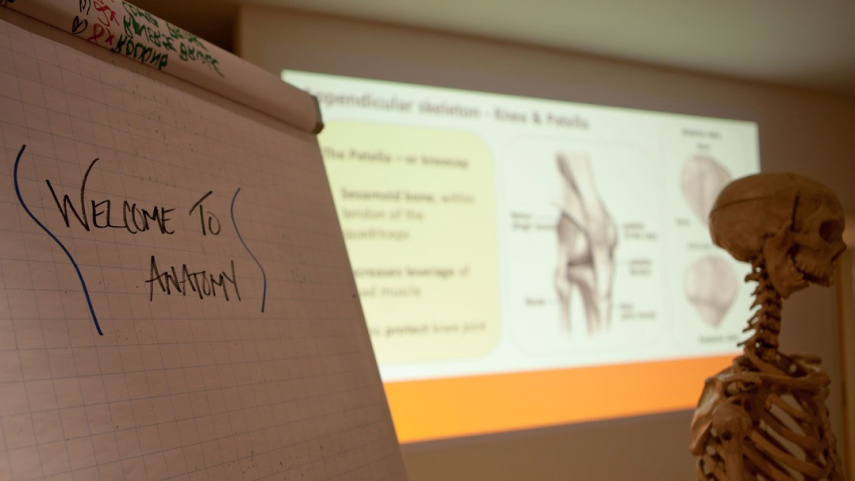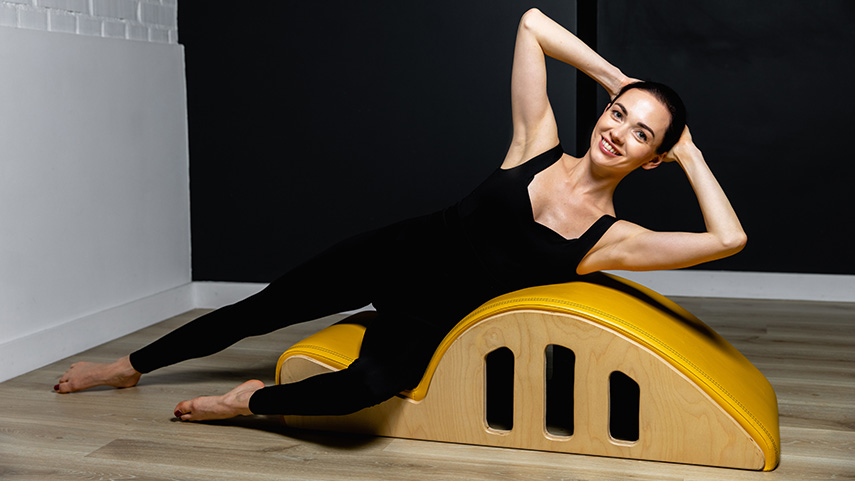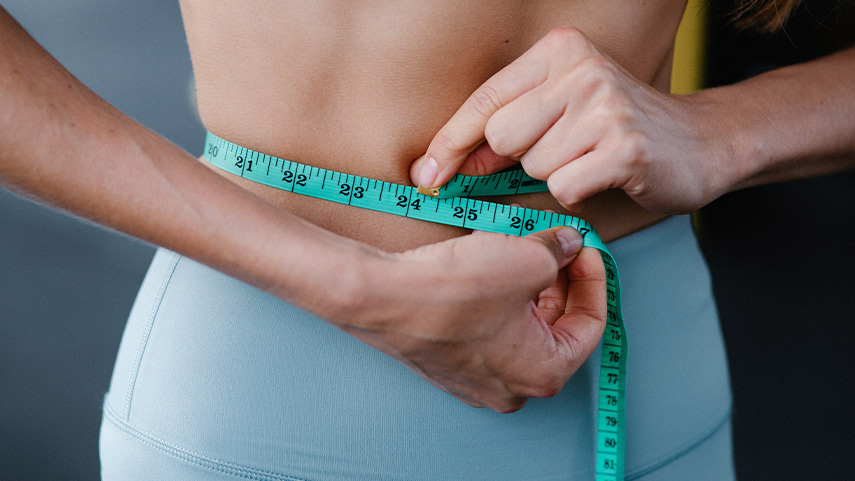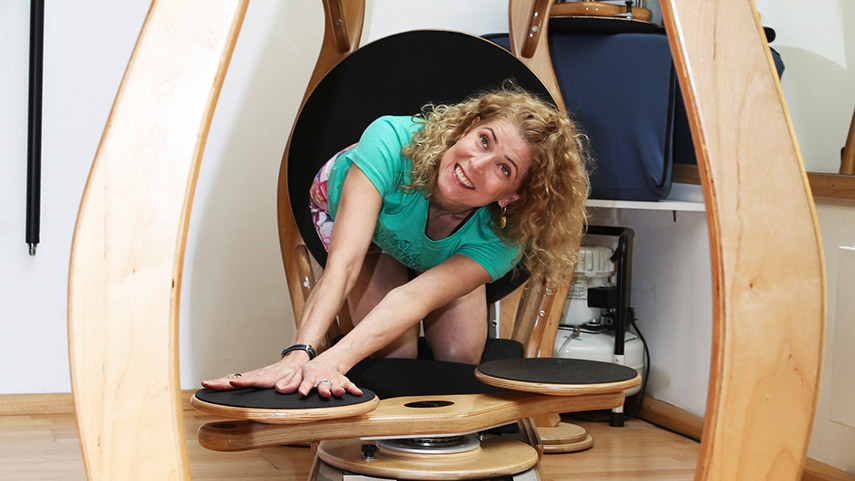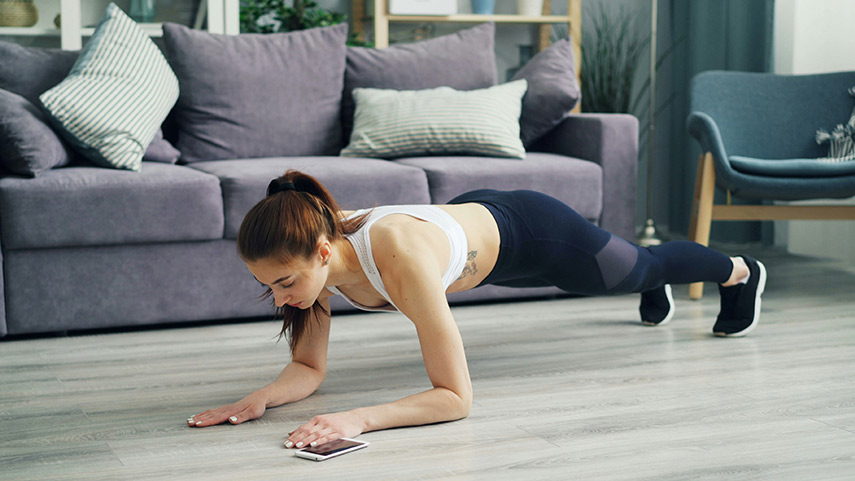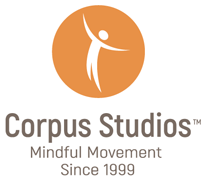L'essentiel de l'anatomie : L'épine dorsale d'un enseignement efficace de la méthode Pilates
Dans le monde de l'enseignement du fitness, un aspect souvent négligé et pourtant crucial est une compréhension approfondie de l'anatomie. Cette connaissance constitue la base sur laquelle des programmes d'exercices efficaces et sûrs sont construits. Au-delà du simple fait de guider les individus dans leurs mouvements, les instructeurs dotés d'une connaissance approfondie de l'anatomie peuvent adapter les séances d'entraînement pour répondre à des besoins spécifiques, prévenir les blessures et optimiser les résultats.
L'anatomie sert de boussole pour naviguer dans le paysage complexe du corps humain, guidant les instructeurs dans la conception d'exercices qui ciblent les muscles, les articulations et les systèmes avec précision. Elle leur permet de prendre des décisions éclairées, en sélectionnant les exercices les plus adaptés à chaque individu, en fonction de sa physiologie et de ses objectifs.
Comprendre les bases et les différences avec le yoga
Dans le monde d'aujourd'hui, il est de plus en plus rare de rencontrer quelqu'un qui ne connaît pas la méthode Pilates. Si beaucoup en ont entendu parler, moins nombreux sont ceux qui connaissent la Contrologie. Qu'est-ce que la Contrologie ? C'est ainsi que Joseph Pilates lui-même désignait son système d'exercices, estimant que les muscles pouvaient et devaient être contrôlés par le pouvoir de l'esprit.
À première vue, les séances de Pilates peuvent être confondues avec le yoga. Et ce n'est pas faux. La méthode Pilates est un mélange unique de yoga et de musculation. Contrairement à la musculation pure, le Pilates sollicite tous les groupes musculaires, ce qui permet d'éviter les tensions, les blessures et les douleurs. Les exercices de Pilates utilisent principalement le poids du corps, mais pour varier les plaisirs et relever les défis, il est possible d'utiliser des équipements tels que les ballons de Pilates, les ballons de tonification, les bandes de résistance et les anneaux isotoniques.
Le système Pilates comprend des exercices pour toutes les parties du corps. Alors que le yoga a sa propre philosophie, la méthode Pilates est fondée sur des principes :
- Contrôle - Fondamentaux dans la méthode Pilates, les mouvements doivent être délibérés et la progression graduelle. L'objectif est d'éliminer les actions dues à l'inertie et de les remplacer par des mouvements intentionnels. Pilates disait : "Assurez-vous que tout votre corps est sous le contrôle total de votre esprit".
- Respiration - La respiration latérale de la poitrine aide à coordonner les mouvements et donne le rythme. Une bonne respiration augmente la consommation d'oxygène, nettoie et revigore le corps. "Pressez les poumons comme vous essorez une serviette mouillée", disait Pilates.
- Pour maintenir les muscles centraux engagés pendant l'inspiration et l'expiration, la respiration doit s'étendre vers les côtés et vers l'arrière, tandis que les muscles abdominaux restent tendus.
- Centrage - La plupart des exercices de Pilates visent à développer le "Powerhouse", c'est-à-dire les muscles fessiers, le plancher pelvien, la partie inférieure de l'abdomen et les muscles du dos. Ces muscles forment le "Powerhouse", à partir duquel l'énergie physique s'étend aux membres. Le tronc, principalement sollicité pendant les exercices, comprend les muscles abdominaux transversaux, les muscles multifides et les muscles du plancher pelvien - des muscles profonds qui stabilisent et soutiennent la colonne vertébrale et les organes internes.
- Concentration - Il s'agit de la capacité à porter toute son attention sur les muscles engagés dans chaque exercice et sur les sensations ressenties dans le corps pendant les mouvements, ce qui favorise le lien entre le corps et l'esprit. Ce principe nous permet de ressentir notre corps et d'exécuter consciemment chaque mouvement, aussi bien pendant les séances d'entraînement que dans la vie de tous les jours.
- Joseph Pilates dirait : "Concentrez-vous sur le mouvement correct à chaque fois que vous faites un exercice, de peur de le faire de manière incorrecte et de perdre tous les avantages vitaux de sa valeur".
- Isolation - L'objectif est d'apprendre au corps à bouger efficacement, en minimisant les dépenses d'énergie inutiles. Il s'agit de faire travailler des groupes musculaires spécifiques tout en laissant les autres se reposer, afin d'éviter les tensions inutiles.
- Précision - La qualité du mouvement est supérieure à la quantité. Alors que 20 répétitions incorrectes peuvent ne donner aucun résultat, trois mouvements précis peuvent susciter une réaction profonde du corps.
- Fluidité et continuité - L'objectif ultime des séances de Pilates est d'obtenir des mouvements fluides et de redonner au corps sa grâce naturelle. Il ne s'agit pas seulement d'exécuter chaque mouvement en douceur, mais d'amener l'ensemble de l'entraînement à une telle fluidité qu'un exercice passe sans transition à un autre, sans pause ni à-coup, et finalement de transférer la grâce acquise dans la vie de tous les jours.
- La régularité - Une pratique régulière est essentielle pour obtenir des résultats. Si deux séances par semaine permettent de maintenir les progrès, trois séances hebdomadaires développent le corps et l'esprit, dévoilent de nouvelles sensations et redonnent de la sensibilité au corps.
Est-il possible de faire du Pilates seul ?
De nombreux adeptes se demandent s'ils peuvent pratiquer le Pilates de manière autonome. Si l'idée de séances autoguidées peut sembler séduisante, il est essentiel de comprendre les risques encourus. Le Pilates n'est pas seulement une série d'exercices ; c'est un système holistique qui exige des mouvements précis et une attention particulière à la technique. Tenter de pratiquer le Pilates sans conseils appropriés peut conduire à des séances d'entraînement inefficaces, à des blessures potentielles, voire à l'exacerbation de pathologies existantes.
L'un des principaux aspects de la méthode Pilates est l'accent mis sur l'alignement, la posture et l'engagement musculaire. Sans la supervision d'un instructeur qualifié, il est difficile de s'assurer que ces éléments sont abordés correctement. En outre, les exercices de Pilates impliquent souvent des mouvements complexes qui nécessitent des indications et des ajustements spécifiques pour être exécutés efficacement et en toute sécurité.
De plus, tenter d'enseigner la méthode Pilates sans avoir reçu une formation adéquate peut avoir de graves conséquences pour l'instructeur et les participants. Les instructeurs de Pilates suivent une formation rigoureuse pour comprendre les subtilités de l'anatomie, de la physiologie et de la mécanique des mouvements. Ils apprennent à adapter les exercices aux besoins individuels, à tenir compte des blessures ou des limitations et à fournir les modifications appropriées.
Chez Corpus Studios™, nous accordons une grande importance à la qualité de l'enseignement de la méthode Pilates. Nos instructeurs suivent une formation complète qui comprend des études approfondies de l'anatomie, de la biomécanique et de la science de l'exercice. Ils sont dotés des connaissances et de l'expertise nécessaires pour guider les clients en toute sécurité tout au long de leur parcours Pilates, garantissant des résultats optimaux tout en minimisant le risque de blessure.
Les principes du système Pilates qui le distinguent des autres séances d'entraînement
Joseph Pilates lui-même a appelé sa méthode "Contrologie". Au cœur de ce régime d'exercices se trouve la coordination du corps, de l'esprit et de l'âme.
Dans son livre "Return to Life through Contrology" publié en 1954, Pilates écrit : "La forme physique est la première condition du bonheur. Notre interprétation de la forme physique est l'obtention et le maintien d'un corps uniformément développé avec un esprit sain pleinement capable d'accomplir naturellement, facilement et de manière satisfaisante nos tâches quotidiennes nombreuses et variées avec un enthousiasme et un plaisir spontanés".
Au départ, ces exercices, conçus pour améliorer l'équilibre, la force, le contrôle des mouvements et la respiration, étaient utilisés par Joseph Pilates lui-même dans les hôpitaux pour rééduquer les patients alités pendant et après la Première Guerre mondiale.
Les principes du système Pilates sont les suivants :
- Le contrôle : Chaque mouvement doit être délibéré et conscient.
- Centrage : Tous les mouvements de la méthode Pilates partent du centre du corps, qui comprend généralement les muscles de l'abdomen, du bas du dos, des hanches et des fesses.
- Concentration : La pleine conscience du corps est essentielle.
- La précision : Chaque mouvement a un but précis.
- Mouvement fluide : Les transitions fluides entre les exercices augmentent l'endurance.
- Respiration : la coordination de la respiration et du mouvement permet de saturer les muscles en oxygène et de réduire la tension dans le cou et les épaules.
- La posture : Le maintien d'une posture correcte pendant les exercices de Pilates corrige les déséquilibres musculaires, optimise la coordination des mouvements et constitue une règle de sécurité fondamentale.
- Relaxation : La capacité d'engager des groupes musculaires spécifiques sans contrainte ni aide d'autrui.
- Endurance : L'amélioration de la précision des mouvements s'accompagne d'une plus grande efficacité, ce qui nécessite moins d'efforts pour effectuer les exercices.
- La régularité : Des séances d'entraînement régulières sont la clé du succès.
L'application de ces principes distingue non seulement la méthode Pilates des autres formes d'exercice, mais elle garantit également une approche holistique de la forme physique et du bien-être.
Conclusion
En conclusion, chez Corpus Studios™, nous embrassons l'essence du Pilates à travers une compréhension profonde de ses principes et de ses pratiques. Notre engagement envers l'excellence s'étend au-delà du studio, puisque nous offrons un programme complet de formation en Pilates. cours d'anatomie et Formation d'instructeur Pilates programmes. Avec une équipe d'instructeurs hautement qualifiés, nous nous assurons que chaque session n'est pas seulement une séance d'entraînement mais une expérience immersive guidée par l'expertise et la précision.
Grâce à notre programme méticuleusement conçu, nous donnons aux individus les moyens de plonger dans les profondeurs du Pilates, en libérant son potentiel de transformation pour le corps et l'esprit. Que vous soyez un novice cherchant à s'embarquer dans un voyage de découverte de soi ou un praticien chevronné cherchant à affiner ses compétences, Corpus Studios™ fournit l'environnement idéal pour la croissance et l'exploration.
Rejoignez-nous et découvrez l'art du mouvement, le pouvoir de la respiration et l'harmonie de la connexion corps-esprit. Expérimentez la différence que la connaissance, le dévouement et la passion peuvent faire dans votre parcours Pilates. Ensemble, sculptons un avenir plus fort et plus équilibré, un mouvement conscient à la fois. Bienvenue à Corpus Studios™, où l'excellence rencontre l'illumination.

